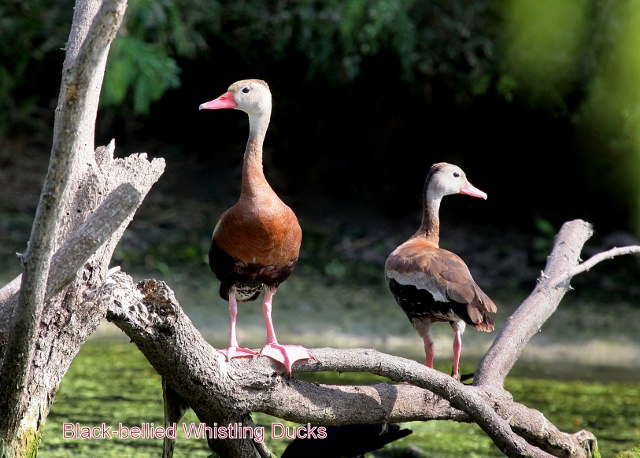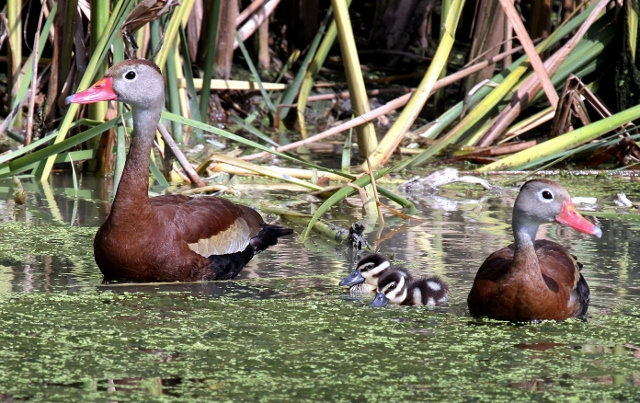by Marilyn Lorenz photos by Chuck Lorenz

You see them everywhere. Flying overhead with a soft wheesh-wheeshing sound, floating in every bit of water they can find, or even just standing around hanging out in your backyard. These are our own very special kind of duck – the Black-bellied Whistling Ducks. Once found only in the Rio Grande Valley and south, they have expanded their range along the Gulf coast into Louisiana and even as far north as the Dallas area.
They are tree ducks and, like Wood Ducks, they prefer to nest in trees, especially live oaks, and can often be found perched on branches or fences. Also like Wood Ducks, they will use nesting boxes when available but are versatile enough to build nests on the ground if there is not a suitable tree handy. They are very good parents and both sexes take excellent care of their babies.

We can’t tell mom from dad but they can. These are fairly large ducks and both males and females look alike. Their bodies are mostly ruddy with pale grey heads and, of course, black bellies. Bills are bright red-orange as are their long, strong legs and webbed feet. They look very much like small geese. In flight they are easily identified by the broad white band on each wing.
Black-bellied Ducks will breed when they are one year of age and seem to mate for life. Brood sizes are quite large and they lay nine-to-eighteen eggs in a single clutch. Curiously, they have a habit of setting up a “dump nest” in an area in which many ducks lay several eggs. These dump nests are not tended but have been found to hold as many as one hundred eggs. The reason for this is not clear. They will put many more eggs into a dump nest during drought so one thought is that they can then put more energy and effort into a tended nest with fewer eggs which will have a better chance of hatching and overall survival. They certainly lay lots of eggs and would probably make good domestic birds. Their biggest egg predators are raccoons and rat snakes.
They mainly eat seeds and will land in feed lots and pastures to eat what the cattle spill. In June, when sorghum harvest begins they will often fly to the stubble fields to feed on the waste grain. In the water, they feast on water star grass as well as snails and small insects.
I often see them resting in the shade and always one or two are on sentry duty. They have their own system of keeping a schedule but everybody gets a chance to rest and everybody takes a turn at watching for any danger that may approach. They are very clannish and family oriented, the youngsters stay with their parents for at least six months. This set of family values has served them well and they are an extraordinarily successful species.
